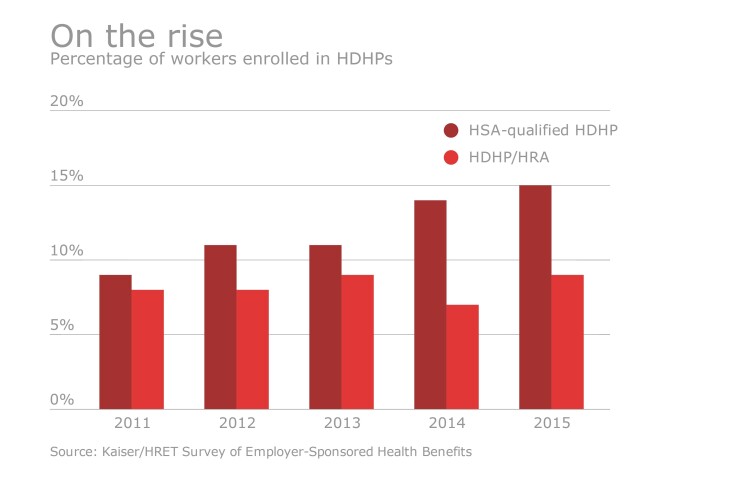If you offer a high-deductible health plan to employees, they probably have the ability to contribute to health savings accounts. I believe that nearly everyone eligible to contribute to a HSA should max out their HSA contributions before making any 401(k) retirement plan contributions. Here’s why.

Double tax-free
HSA contributions made pre-tax and when balances are used to pay qualified healthcare expenses, they come out of HSA accounts tax-free. There are no other employee benefits that work this way.
No use it or lose it
Employees may confuse HSAs with flexible spending accounts, where balances not used during a particular year may be forfeited. In HSAs, unused balances carry over to the next year. And so on. HSA balances are never forfeited due to lack of use during a year.
Retiree healthcare expenses
Anyone fortunate enough to accumulate a HSA balance that is carried over into retirement may use it to pay for many routine and nonroutine healthcare expenses. HSA balances can be used to pay for prescription drugs, medical premiums, COBRA premiums, dental expenses, Medicare premiums, long-term care insurance premiums and of course any co-pays, deductibles or co-insurance amounts. HSA accounts are a much more tax-efficient way of paying for healthcare expenses in retirement, especially if the alternative is taking a taxable 401(k) plan distribution.
Contributing and investing
Maximum annual HSA contributions at the moment are modest – $3,350 per individual or $6,750 for a family. Another $1,000 in catch-up contributions are permitted for those over age 55. The key to building an account balance that can carry over into retirement is maxing out contributions each year and investing unused contributions so account balances can grow. If your HSAs don’t offer investment funds, think about adding them in 2016.
HSAs will continue to become a more important source of funds for retirees to pay healthcare expenses as high-deductible health plans becomes more widespread. Make sure you educate your employees on their use.





